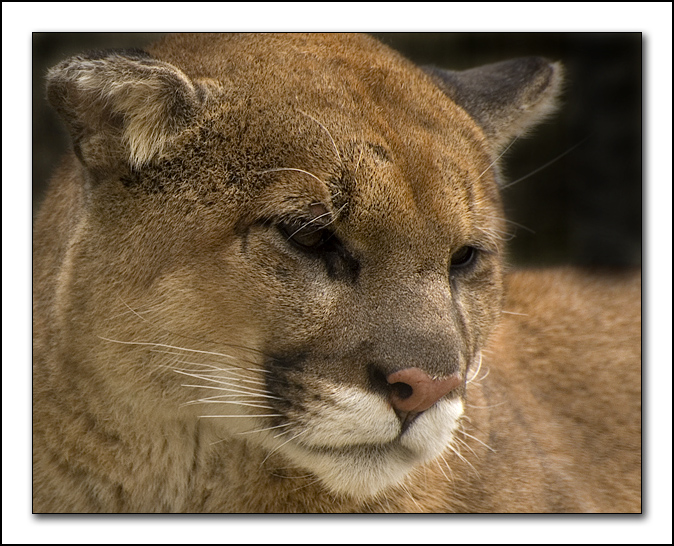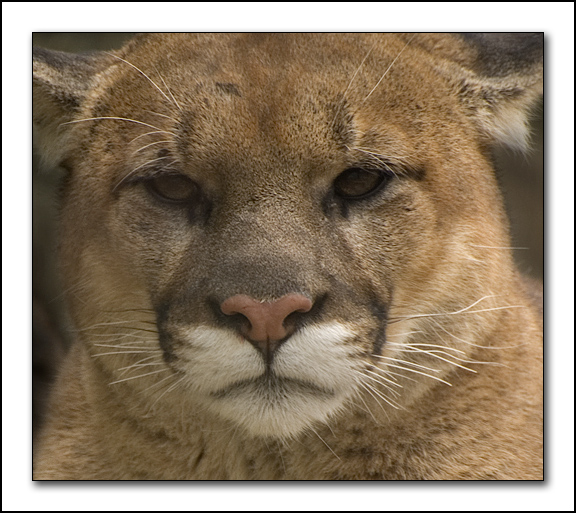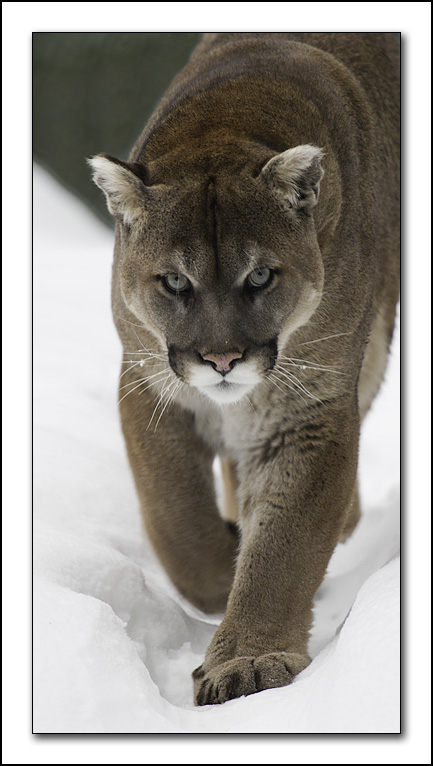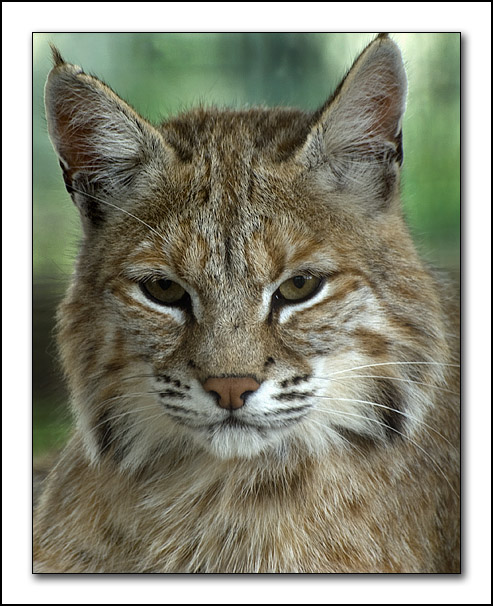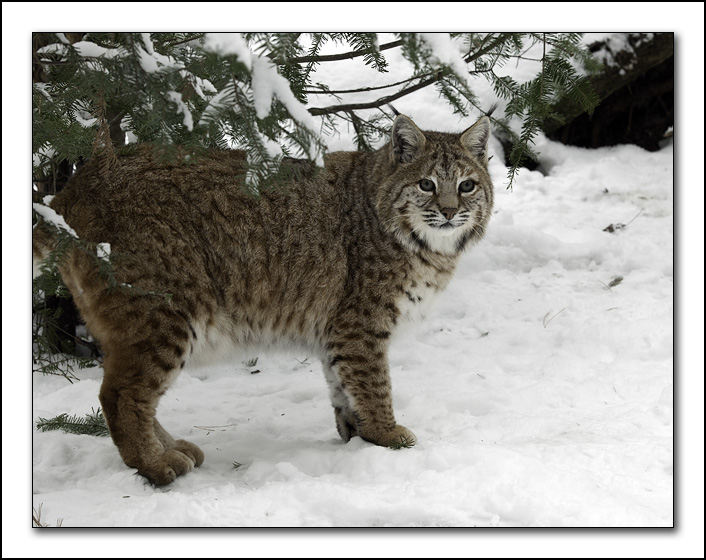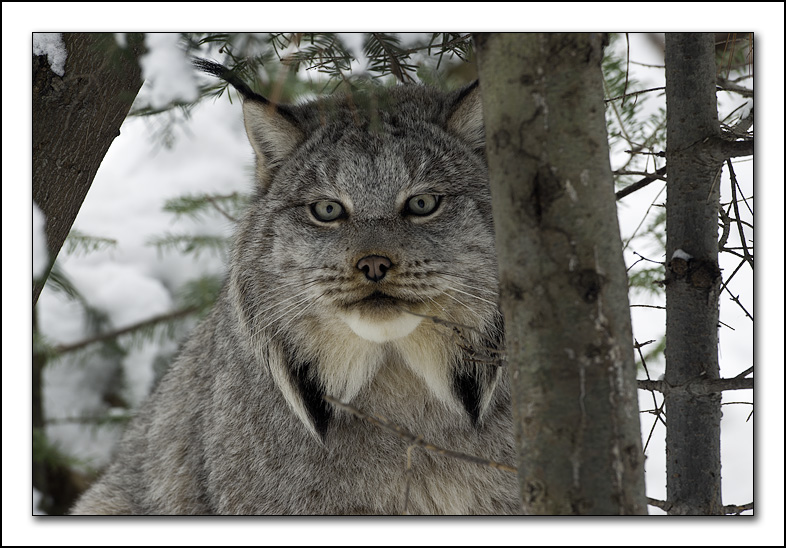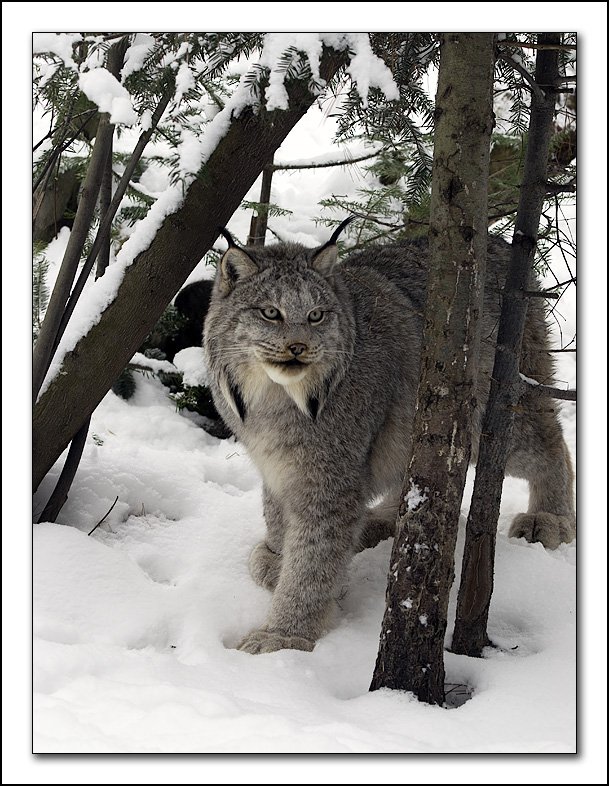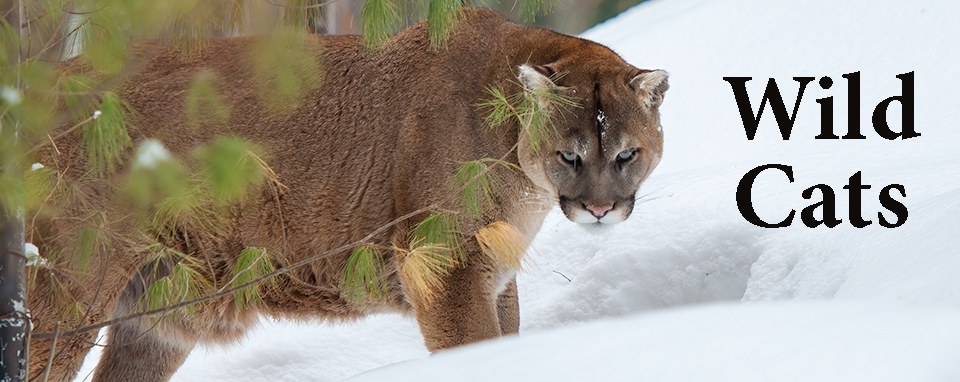
Every once in a while we hear about cougar sightings in Ontario. According to the provincial governments website, in Ontario, Cougars are “most likely believed” to live in northern Ontario because of the remoteness of the habitat. That doesn’t sound very confident and I struggle with believe that they exist in Ontario anymore at all.
Canada Lynx and Bobcats are native to Ontario and although I have never managed to get a photograph of one in the wild, I am always overjoyed to witness one. All my sightings have been very brief, or to put it right, a mere glimpse. All images on this page are from captive cats.
Canada Lynx occur predominantly in dense boreal forests. They are stealthy cats that avoid humans and hunt at night. This makes them for an extremely rare sight. They have huge paws covered with thick hair to help them move swiftly over the snow. Even though they have long legs, they don’t run fast and rarely chase prey. They prefer to wait and ambush their prey. Their main diet is the snowshoe hare, but they will gladly take mice, squirrels, and birds.
Bobcats live much more south than the Lynx. Like the Lynx, the bobcat hunts by stalking its prey and then ambushing with a short chase or pounce. And although they have some similar features, the two species are different. The bobcat is an opportunistic predator that, unlike the more specialized Canada lynx, readily varies its prey selection. It prefers deciduous, coniferous, or mixed woodlands, but unlike the Lynx, it does not depend exclusively on the deep forest. The bobcat is an adaptable animal and their primary food source depends on the region they live. They can survive in the swamps, mountains or desert.
Big Cat Pictures (Captive)
